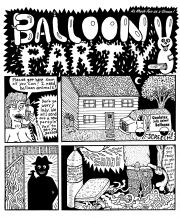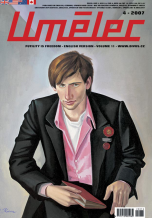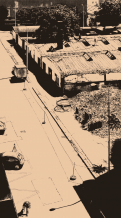| Revista Umělec 2001/2 >> Art Races | Lista de todas las ediciones | ||||||||||||
|
|||||||||||||
Art RacesRevista Umělec 2001/201.02.2001 Vladan Šír | news | en cs |
|||||||||||||
|
This year’s art competitions are entering their final phases in a number of European countries. The Turner Prize finalists were announced in London at the end of May. A jury in Bratislava will make public its own winner on June 20, and by then Pra-gue will have just about short-listed its candidates for the Chalupecký Award.
The Slovak art competition, previously known as the Tonal Award, has now been dubbed the Oskár Čepan Award. Modeled after the Jindřich Chalupecký Award in the Czech Re-public, the winner, who may not be over 35 years old, receives a three-month residency in Headlands near San Francisco. This year’s candida-tes include Dorota Sadovská, Marko Blažo, Erik Binder, and Dušan Za-horanský. The award will be presented by the President of the Slovak Republic. The finalists for the Jindřich Chalu-pecký Award will be selected at the end of June and the winner will be announced in the fall. But it is the Turner Prize that consistently attracts the most international media attention. The GBP 20,000 prize is the biggest reason, with the live TV broadcast of the award ceremony a close runner-up. What’s mo-re, the Turner Prize has a reputation on the island for inciting debate on what contemporary art means today. This year the short-listed artists are helping the Prize to make headlines, one example being Martin Creed, whose Work No. 88 consists of an A4 sheet of paper crumpled into a ball. The other finalists include photographer Richard Billingham, installation artist Mike Nelson and filmma-ker Isaac Julien, who is, reportedly, the biggest surprise of the bunch. For the first time two of the 180 ar-tists, Creed and Nelson, were nominated by members of the public and not by art scene insiders. The jury chair, Nicholas Serota, denied any democratic shifts in the Prize’s mechanism. The Guardian quoted him as saying: “This is not and never has been a prize which is awarded on the basis of a popular vote.” Not to be left out, last year the Fre-nch came up with their own award, the Marcel Duchamp, modeled after the Turner Prize. Thomas Hirschhorn was selected as the first winner and his work was exhibited at the Centre Georges Pompidou. The prize awards the winning artist FRF 200,000. This year’s candidates and dates have yet to be announced. Last but not least, the list of national art prizes last year was topped off by the Vincent, a new Maastricht-based award given to a European contemporary artist. This biannual award intends to provide a platform for the united presentation of European art. Last year Eija-Liisa Ahtila, the Finnish video-artist and photographer, made off with the Euro 50,000 grand prize. Vladan Šír
01.02.2001
Artículos recomendados
|
|||||||||||||
|
04.02.2020 10:17
Letošní 50. ročník Art Basel přilákal celkem 93 000 návštěvníků a sběratelů z 80 zemí světa. 290 prémiových galerií představilo umělecká díla od počátku 20. století až po současnost. Hlavní sektor přehlídky, tradičně v prvním patře výstavního prostoru, představil 232 předních galerií z celého světa nabízející umění nejvyšší kvality. Veletrh ukázal vzestupný trend prodeje prostřednictvím galerií jak soukromým sbírkám, tak i institucím. Kromě hlavního veletrhu stály za návštěvu i ty přidružené: Volta, Liste a Photo Basel, k tomu doprovodné programy a výstavy v místních institucích, které kvalitou daleko přesahují hranice města tj. Kunsthalle Basel, Kunstmuseum, Tinguely muzeum nebo Fondation Beyeler.
|






























 We Are Rising National Gallery For You! Go to Kyjov by Krásná Lípa no.37.
We Are Rising National Gallery For You! Go to Kyjov by Krásná Lípa no.37.
Comentarios
Actualmente no hay comentariosAgregar nuevo comentario